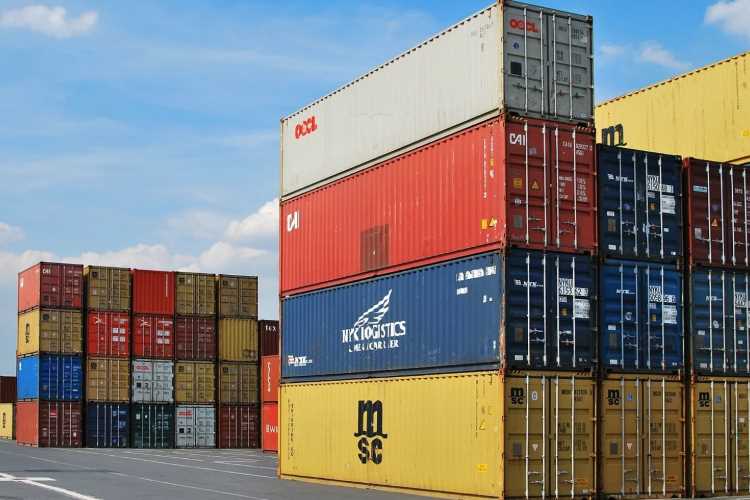
In recent years, India has embarked on a strategic journey to reshape its global engagement through free trade agreements. The FTAs, which involve easing trade barriers between nations, hold immense potential to redefine India’s trade relations. However, their success hinges largely on meticulous planning, negotiation and execution, says a report.
India’s approach to FTAs has been cautious, often prioritising protectionist policies to shield its domestic industries. This approach, while safeguarding local markets, has sometimes limited India’s ability to exploit the full potential of global trade. The current shift in strategy, focusing on more expansive and strategic FTAs, is a welcome change. It signals India’s readiness to engage more robustly with the global economy, says a review by Global Trade Research Initiative.
The choice of FTA partners is crucial. In the past, India’s trade agreements have primarily been with its eastern neighbours. However, the recent pivot towards Western economies, including the European Union and the United States, suggests a recognition of the potential in these markets. This westward shift is not just about geography but about aligning with economies that can offer technological, manufacturing, and investment synergies.
READ | Climate finance: A closer look reveals gaping holes
India’s FTAs
One of the critical aspects of India’s FTAs is their impact on trade balance. India’s embrace of FTAs extends beyond traditional physical trade. The Comprehensive Economic Partnership Agreement (CEPA) with the UAE, for instance, focuses on e-commerce and digital trade. This reflects the growing importance of digital commerce and data flows in the global economy. India should capitalise on its burgeoning digital infrastructure and tech talent pool to negotiate FTAs that promote cross-border data flows, facilitate digital partnerships, and foster new forms of trade in the digital realm.
Historically, some of India’s trade agreements have resulted in trade deficits, raising questions about their overall benefit. A nuanced understanding is essential here. Trade deficits in themselves are not necessarily detrimental if they lead to the influx of critical technology, capital, or inputs that further India’s long-term economic goals. The key is to ensure that FTAs are structured in a way that these deficits are a stepping stone to future trade surpluses.
Another aspect to consider is the role of domestic industries and their readiness to compete in a liberalised trade environment. FTAs can expose local industries to fierce international competition, which can be both a challenge and an opportunity. The government’s role in preparing these industries, through policy support and infrastructure development, is crucial. This includes enhancing manufacturing capabilities, improving supply chain efficiencies, and investing in research and development.
India’s FTAs should also focus on services, a sector where India has a competitive advantage. This includes IT services, medical tourism, education, and entertainment. Leveraging this strength in international trade agreements can provide a significant boost to the economy.
Furthermore, new global challenges such as climate change and sustainable development goals need to be integrated into India’s trade policies. Future FTAs must consider environmental sustainability, carbon footprint regulations, and green technology collaborations. This not only aligns with global trends but also opens up new avenues for trade in environmental goods and services.
While bilateral and plurilateral FTAs provide significant opportunities, regional trade agreements hold immense potential. The Regional Comprehensive Economic Partnership (RCEP), which includes India, presents a crucial case in point. Navigating RCEP effectively will require India to address concerns about potential trade deficits and ensure domestic sectors are equipped to compete. However, successfully integrating into RCEP could unlock access to a vast Asian market and position India as a key player in regional value chains.
The domestic political and economic climate is another critical factor. With general elections on the horizon, any FTA negotiation will need to be sensitive to the domestic economic environment and public sentiment. The government must balance liberalizing trade with safeguarding the interests of its vulnerable sectors and population segments.
In terms of implementation, there is a need for greater transparency and stakeholder engagement. Past experiences have shown that FTAs can sometimes be perceived as opaque, with limited input from affected industries and civil society. Ensuring a more inclusive process can help in formulating agreements that are more balanced and have wider acceptance.
The focus should not just be on signing FTAs but also on their effective implementation. This includes regularly reviewing agreements, addressing non-tariff barriers, and ensuring that the benefits of trade are equitably distributed. For India, this means not just opening its markets but also ensuring its products and services find easier access to foreign markets.
Implementing FTAs effectively requires a multi-pronged approach. Building capacity within government agencies and businesses to understand and utilize FTA benefits is crucial. Additionally, India’s vast diaspora in partner countries can be leveraged as valuable bridges, providing crucial market insights and facilitating business connections. By actively engaging with and empowering the diaspora, India can turn its global community into a strategic asset for maximizing the benefits of its FTAs.
India’s evolving FTA strategy holds the promise of propelling the country into a new era of economic growth and global integration. By carefully selecting partners, focusing on both goods and services, integrating global challenges like sustainability, and ensuring inclusive and transparent negotiations, India can harness the true potential of free trade. As the world economy becomes increasingly interconnected, India’s FTAs could be a game-changer, not just for its economy but for its strategic position in the global order.
